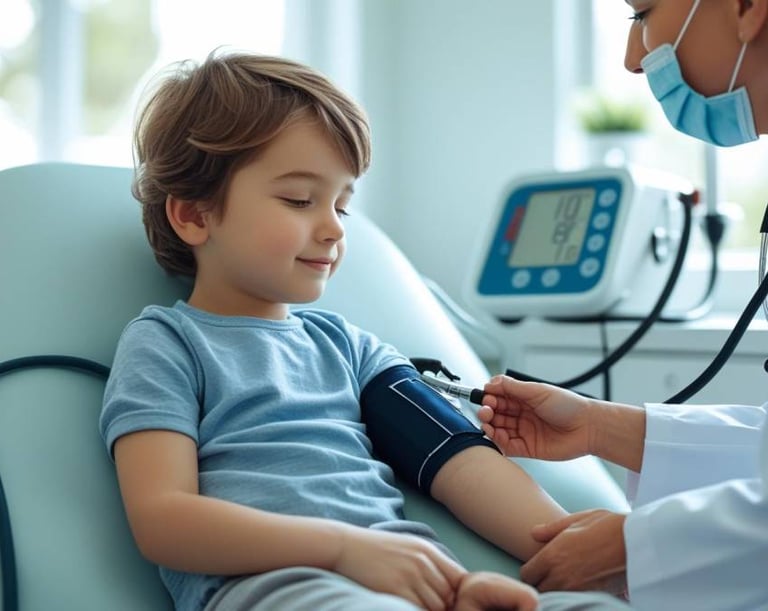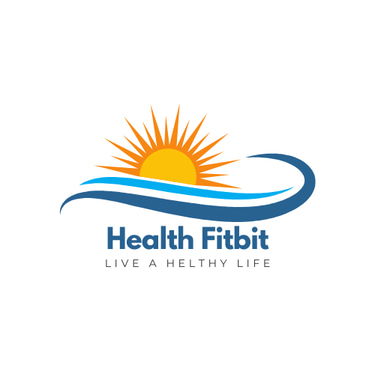Child Blood Pressure Management: Insights for Healthy Hearts
Understand child blood pressure, why it's rising, and essential management strategies. Learn about diagnosis, lifestyle changes, and when medication helps to nurture your child's heart health.
HEALTH & AWARNESS
Tapas Kumar Basu
6/14/20254 min read


It's easy to overlook, but high blood pressure (hypertension) isn't just an adult concern. In fact, an increasing number of children are being diagnosed with elevated blood pressure, often linked to lifestyle factors like obesity. Understanding the nuances of child blood pressure management is crucial for their long-term health and well-being.
Why is Child Blood Pressure Different?
Unlike adults, where a standard 120/80 mmHg is the benchmark for normal blood pressure, a child's "normal" reading varies significantly. It's not a one-size-fits-all number. Instead, it depends on their:
Age: Blood pressure naturally increases as children grow.
Sex: There are slight differences between boys and girls.
Height: Taller children generally have slightly higher normal ranges.
Healthcare providers use specific percentile charts based on these factors to determine if a child's blood pressure is elevated, prehypertensive, or hypertensive. For instance, hypertension in children is generally defined as an average systolic and/or diastolic blood pressure that 95% for their age, sex, and height on three or more occasions.
The Importance of Early Detection
High blood pressure in childhood, if left unmanaged, can track into adulthood and significantly increase the risk of serious health complications later in life, including:
Heart disease
Stroke
Kidney disease
Heart failure
That's why regular blood pressure checks are vital, ideally at least once a year for healthy children aged 3 and older. For younger children or those with specific risk factors (like a history of prematurity, certain congenital conditions, or family history of hypertension), more frequent monitoring may be necessary. Proper measurement technique, including using an appropriately sized cuff, is paramount for accurate readings.
Management Strategies: A Holistic Approach
Managing child blood pressure typically involves a combination of strategies, with lifestyle modifications often being the first line of defense.
1. Lifestyle Changes: The Foundation of Health
For many children with elevated or stage 1 hypertension, significant improvements can be seen through dedicated lifestyle adjustments. This requires a family-centered approach:
Heart-Healthy Diet:
Emphasize fruits, vegetables, whole grains, lean proteins (fish, poultry, beans), and low-fat dairy.
Limit processed foods, sugary drinks, and foods high in saturated fat, trans fat, and cholesterol.
Reduce Sodium Intake: This is critical. Encourage cooking at home to control salt content and be mindful of hidden sodium in packaged foods. Recommendations are generally around 1,200 mg/day for children aged 2-3 and 1,500 mg/day for older children.
Regular Physical Activity:
Children should aim for at least 60 minutes of moderate to vigorous physical activity most days of the week (ideally daily).
Encourage active play, sports, and outdoor activities.
Limit sedentary screen time to less than 2 hours a day to promote more movement.
Weight Management: If a child is overweight or obese, achieving and maintaining a healthy weight is often the most effective way to lower blood pressure.
Adequate Sleep: Ensure children get sufficient, quality sleep, as sleep patterns can influence blood pressure regulation.
Stress Management: While less directly linked, chronic stress can play a role. Encouraging relaxation techniques and a balanced routine can be beneficial.
2. When Medication Becomes Necessary
While lifestyle changes are prioritized, some children may require medication. This is typically considered if:
Lifestyle modifications haven't effectively lowered blood pressure after several months.
The child has stage 2 hypertension.
The child has symptomatic hypertension (e.g., headaches, chest pain, vision changes).
There's evidence of target organ damage (e.g., to the heart or kidneys).
The hypertension is secondary to another underlying medical condition that needs specific pharmacological treatment.
A pediatric specialist (often a nephrologist or cardiologist) will determine the appropriate medication, which may include classes like ACE inhibitors, angiotensin II receptor blockers (ARBs), calcium channel blockers, or diuretics. Treatment is individualized, and close monitoring for efficacy and side effects is essential.
The Power of Collaborative Care
Effective blood pressure management in children is a team effort. Close collaboration between parents, the child, and healthcare providers (pediatricians, specialists, dietitians, and physical therapists) is key to developing and sticking to a comprehensive treatment plan. Positive reinforcement and education for both the child and family about the importance of these changes can significantly improve outcomes and help prevent long-term health issues.
By staying informed and actively participating in your child's health journey, we can help nurture healthy hearts and set the stage for a healthier future.
Frequently Asked Questions (FAQ)
Q1: How often should my child have their blood pressure checked?
A1: For healthy children aged 3 and older, blood pressure should be checked at least once a year during routine check-ups. For younger children or those with specific risk factors, your pediatrician may recommend more frequent monitoring.
Q2: What's considered "normal" blood pressure for a child?
A2: Unlike adults, there isn't a single "normal" number for children. A child's blood pressure is evaluated based on their age, sex, and height using specialized percentile charts. What's normal for one child may be considered elevated for another, even at the same age.
Q3: Can lifestyle changes really make a difference in lowering a child's blood pressure?
A3: Absolutely! For many children with elevated blood pressure or even early-stage hypertension, significant improvements can be achieved through consistent lifestyle modifications. These include a heart-healthy diet, regular physical activity, maintaining a healthy weight, adequate sleep, and managing stress.
Q4: What foods should my child avoid if they have high blood pressure?
A4: It's best to limit processed foods, sugary drinks, foods high in unhealthy fats (saturated and trans fats), and especially foods high in sodium. Focusing on fresh fruits, vegetables, whole grains, lean proteins, and low-fat dairy is recommended.
Q5: When is medication necessary for a child with high blood pressure?
A5: Medication is typically considered if lifestyle changes haven't been effective after several months, if the child has severe hypertension (stage 2), experiences symptoms related to high blood pressure, shows signs of organ damage, or if the hypertension is due to an underlying medical condition. A pediatric specialist will make this determination.
Q6: What are the long-term risks if high blood pressure in children goes untreated?
A6: Untreated high blood pressure in childhood can lead to serious health problems later in life, including an increased risk of heart disease, stroke, kidney disease, and heart failure. Early detection and management are crucial for preventing these complications.
Q7: How can I help my child maintain a healthy lifestyle to manage their blood pressure?
A7: Leading by example is powerful. Involve the whole family in making healthy food choices, cooking at home, and engaging in regular physical activities together. Limit screen time, ensure adequate sleep, and encourage open communication about any stress they might be experiencing. Make healthy living a positive and shared family goal.
Explore fitness, meditation, and healthy living tips.
© 2025. All rights reserved.
